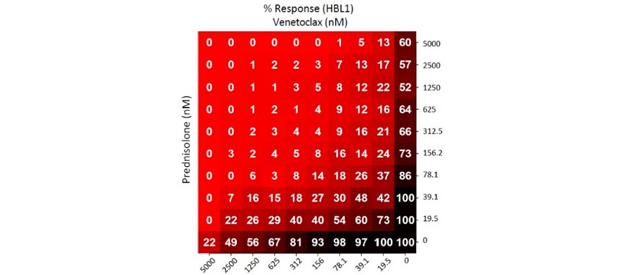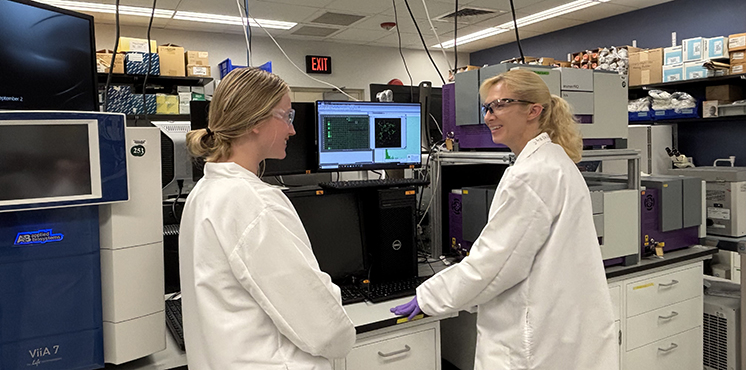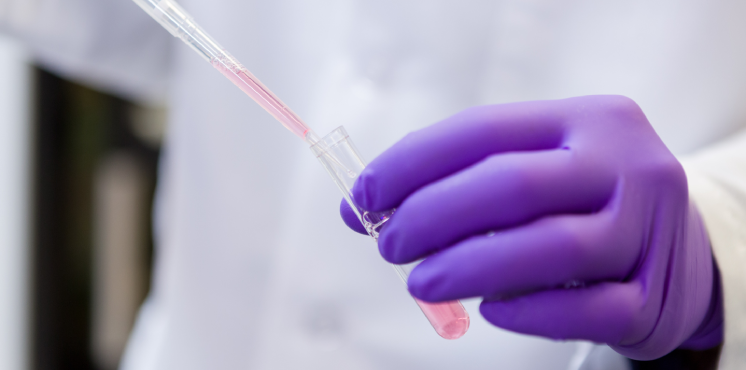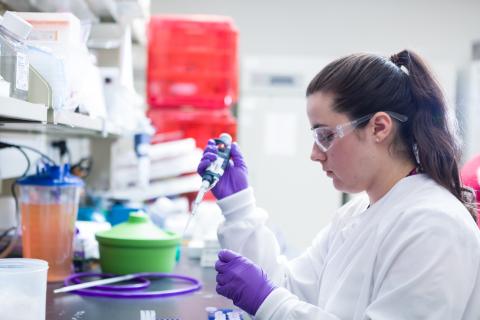Our Impact on Drug Discovery and Development
Our research teams develop and apply cutting-edge approaches that speed therapeutic solutions for unmet health needs.
Moving More Treatments from the Lab to the Clinic
A new drug’s journey from the lab to the medicine cabinet can take up to 15 years. On the way, it passes through dozens of steps — and potential failure points. As a result, many never get approved for human use.
For more than 10 years, we’ve been making the drug discovery and development steps faster and more predictable. We built a pharmaceutical collection of nearly every drug approved for humans. We also built automated solutions to swiftly test drugs or combinations of them for new uses, including emerging infectious diseases. Through our partnerships with academia, industry and patient advocacy groups, we have enabled more than 45 promising new drugs to move into clinical trials.
Our newer drug discovery and development efforts focus on preparing for future pandemics and building a one-stop shop for finding, designing and testing new molecules with therapeutic potential.
Impact Stories
New Screening Tool Could Rapidly Reveal Better Cancer-Drug Combinations

Scientists at NCATS and NCI designed a screening method that could help predict in the lab how combos of three or more cancer drugs will work in people.
NCATS Enables IND Clearances and Drug Approvals

Our labs play a critical, hands-on role in getting new therapies to patients by partnering to discover and develop drugs for rare diseases and other unmet medical needs.
Drug Discovery and Development Research Activities
We speed preclinical research on promising new medicines through a variety of research activities.

Preclinical Chemical Biology Laboratory
Our scientists and collaborators bridge chemistry and the biology underlying disease to develop new ways to discover and create chemical probes and potential drug candidates.

Matrix Combination Screening
Our experts use matrix combination screening technology to quickly identify promising drug combinations with the most potential to help patients.

Compound Management
Our compound management team uses sophisticated and automated techniques to supply chemicals for NCATS screening experiments to uncover new treatments for diseases.
Drug Discovery and Development Research News

A Decade-Long Program Investigating Understudied Proteins Builds a Foundation for the Future
July 21, 2025 - NCATS News
- Illuminating Druggable Genome (IDG)
- Our Impact on Drug Discovery and Development
Since 2013, the Illuminating the Druggable Genome program has helped researchers learn about understudied protein families to find potential therapeutics.
Read ArticleA Decade-Long Program Investigating Understudied Proteins Builds a Foundation for the Future
July 21, 2025 - NCATS News
- Illuminating Druggable Genome (IDG)
- Our Impact on Drug Discovery and Development
Since 2013, the Illuminating the Druggable Genome program has helped researchers learn about understudied protein families to find potential therapeutics.
Zarate Advances New Options to Treat Severe Depression
June 20, 2025 - Grantee/Partner News
- Our Impact on Drug Discovery and Development
SPARK NS Selects Eight Projects to Receive Aggregate Funding of Up to $16 Million to Advance Academic Discoveries in Parkinson’s Disease from the Lab to the Clinic
April 3, 2025 - Grantee/Partner News
- Our Impact on Drug Discovery and Development



